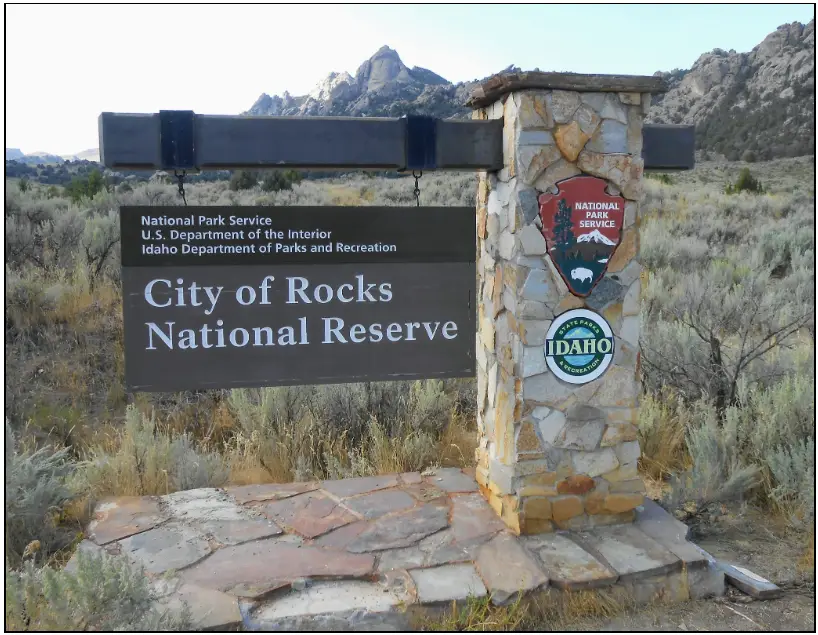Beauty Amid a City of Rocks?
It’s hard to tell now, but there once was a time when I was really into rock climbing.
As it happened, a good friend of mine was introducing me to the sport. He was “into it” (…and as far as I know, he still is). I was learning the sport at some of the well-known and heavily-frequented climbs along the Wasatch Front, Utah. My first ascent was up a 5.9 route (slightly less than vertical) in Rock Canyon (Provo, Utah). Later, my friend took me to some easier bouldering spots and some more technical climbs in nearby American Fork Canyon. Rock climbing was just…cool.
If you’ve climbed yourself or ever hung out with rock climbers, then you know they can be an “adventurous lot.” (Thinking about and planning the next climb is always…fun.) We got to talking. Somebody dropped out, “Hey, have you ever seen the City of Rocks? What? No? Then, we need to go.”
I’m sad to say that things changed for me not long after that. Work and life intervened. I never made it to the City of Rocks…until over 20 years later!
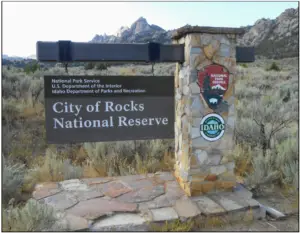
Park Entrance – North
Photo – FRLambrechtsen
What is the City of Rocks and where is it? Well, interestingly, it’s in south central Idaho. I say “interestingly” because it’s not really that well known. It’s off the beaten path. Most folks don’t “happen upon it.” They find out about it and then go there…on purpose. It’s not far from Burley, Idaho. (Many know Burley because it’s just off I-84 between Salt Lake City and Boise.) It’s also not far from one of my favorite little towns in Idaho, called: Albion. (Albion is itself historic and really cool. At some point, I’ll have to write an article about Albion too!)
But I digress.
The City of Rocks is a “national reserve” looked after by the U.S. Department of the Interior and the Idaho Department of Parks and Recreation. As with many wilderness areas, it’s a place of wonder and exceptional natural beauty.
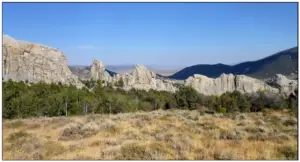
The Spires
Photo – FRLambrechtsen
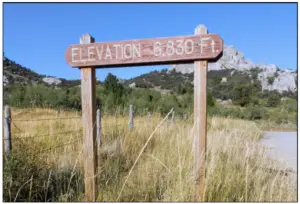
Elevation? High Enough
Photo – FRLambrechtsen
Is it worth a visit? Absolutely! My visit was in the early autumn. It was Labor Day weekend, to be exact. We could have camped in one of the many different campgrounds in the park, but for this trip we ended up taking a room in Burley. In the park there are campgrounds with some facilities. Other campgrounds are pretty bare with little or no amenities at all.
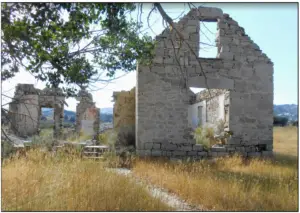
Photo – FRLambrechtsen
There’s a modest visitor center near the north entrance to the park. It’s a nice cabin with clean restrooms, a bookshop, and picnic tables. The rangers there are generous with answers to questions. Bring your own water? That’s always a good idea, especially in summertime, but the park rangers can give the best advice on that (i.e. where water is available in the park and where it isn’t).
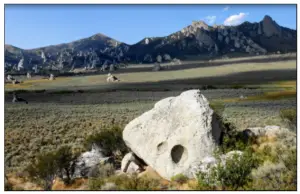
Photo – FRLambrechtsen
Native Americans, the Shoshone and the Bannock tribes, lived in the area well before any whites. There are records of white explorers coming into the area – with horses – as early as the 16th century. Peter Skene Ogden (Ogden, Utah, was named after this mountain man) came to the area in 1826 with a group called the Snake River Brigade. They were beaver trappers. They didn’t find many beaver in the area. (Being a wilderness area and not too far from the Great Basin and arid regions of Nevada, it doesn’t have a lot of water, something that beaver need to thrive.)
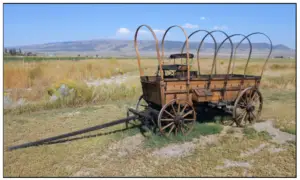
Photo – FRLambrechtsen
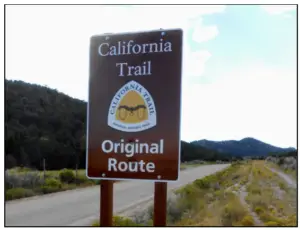
Photo – FRLambrechtsen
By 1843, the City of Rocks became a stop for more and more settlers on their way from civilization in the east to “greener pastures” in California. The trickle of westbound immigrants over the California Trail soon became an almost never-ending stream of travelers. In January 1848, flakes of gold were discovered in the American River at Sutter’s Mill near Coloma, California. Word got out and the “California Gold Rush” was in full swing by 1849.
Thousands passed over, through, or by the City of Rocks in covered wagons, on foot, or any which way they could. Not unlike travelers might do today, the immigrants then carved their names in wood, on rocks, or they used what was at-hand, axle grease, to leave their “mark.”
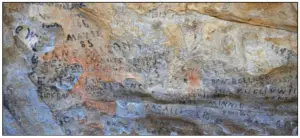
Graffiti or legacy? They wrote their names in axle grease.
Photo – NPS.gov
In addition to these “marks” left behind, the ruts of the thousands of wagons that passed that way can still be seen, carved into/through the sandstone in area. It’s fun to explore for these old wagon ruts. It’s fun to stop, listen and think what it might have been like….back then.
Speaking of fun, one of the main attractions at the City of Rocks remains: rock climbing.
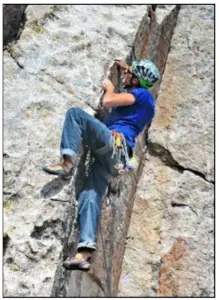
I think most of the routes in the City of Rocks are…Trad Climbing.
Place your protection. Remove your protection.
Photo – NPS.gov
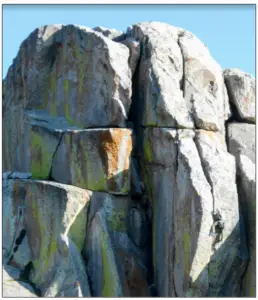
I didn’t have a telephoto lens! Lots of “crack climbing.”
Photo – FRLambrechtsen
There is great climbing at the City of Rocks pretty much year-round. We just pulled over and watched from the road while climbers ascended up and then belayed back down. There is everything from light bouldering to some pretty technical routes. (If you’re into those sorts of challenges, there’s even some “pretty over-hung” routes. I can feel my forearms tightening now!)
As you can see, there is a lot of beauty amid this…City of Rocks. Come to climb. Come to camp. Come to see. Come to just be still and listen. A visit to the City of Rocks in south central Idaho (a couple of hours by car from Salt Lake City and not that much farther from the other direction: Boise) is worth it.

